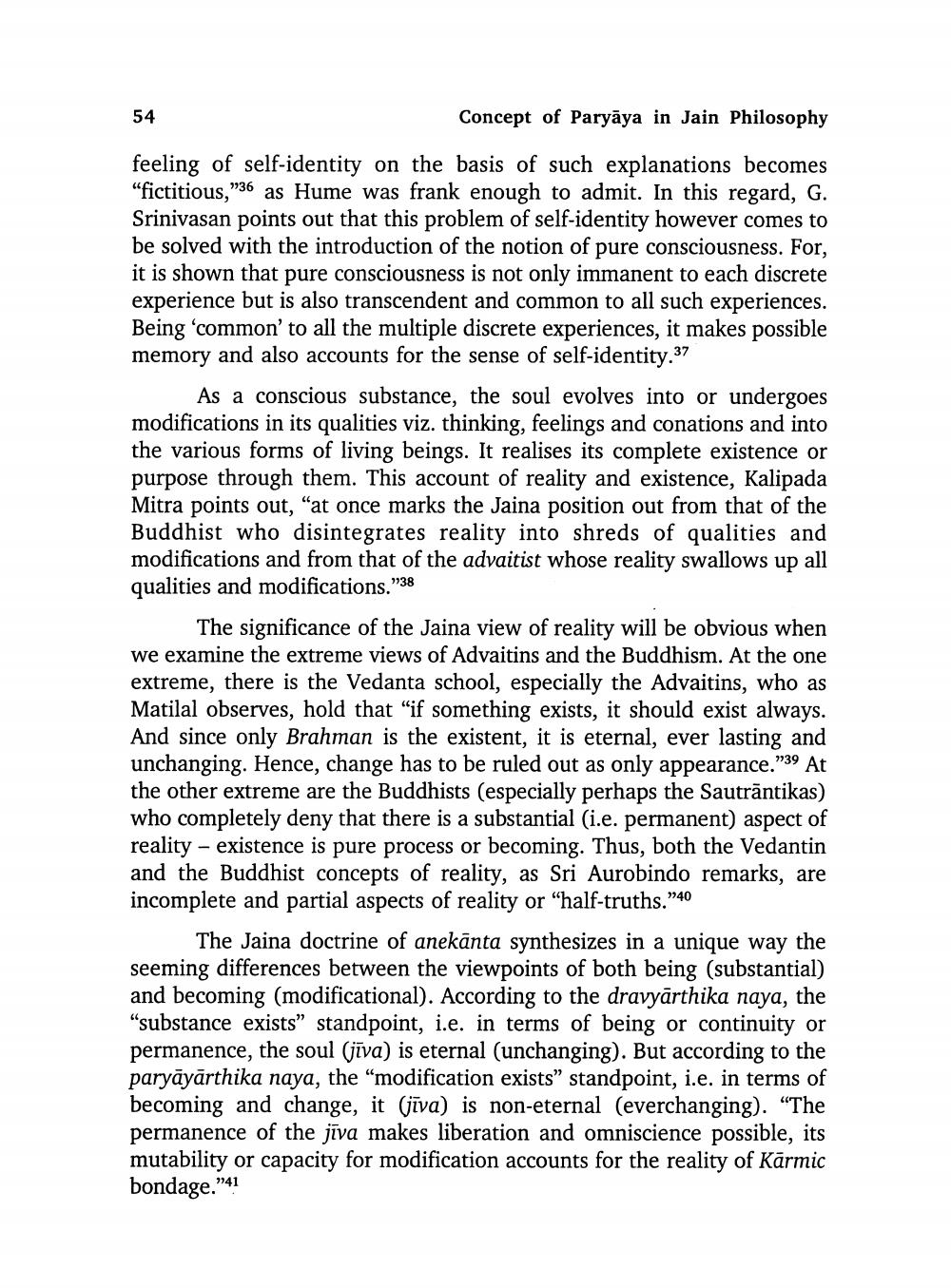________________ 54 Concept of Paryaya in Jain Philosophy feeling of self-identity on the basis of such explanations becomes "fictitious,"36 as Hume was frank enough to admit. In this regard, G. Srinivasan points out that this problem of self-identity however comes to be solved with the introduction of the notion of pure consciousness. For, it is shown that pure consciousness is not only immanent to each discrete experience but is also transcendent and common to all such experiences. Being 'common' to all the multiple discrete experiences, it makes possible memory and also accounts for the sense of self-identity. 37 As a conscious substance, the soul evolves into or undergoes modifications in its qualities viz. thinking, feelings and conations and into the various forms of living beings. It realises its complete existence or purpose through them. This account of reality and existence, Kalipada Mitra points out, "at once marks the Jaina position out from that of the Buddhist who disintegrates reality into shreds of qualities and modifications and from that of the advaitist whose reality swallows up all qualities and modifications."38 The significance of the Jaina view of reality will be obvious when we examine the extreme views of Advaitins and the Buddhism. At the one extreme, there is the Vedanta school, especially the Advaitins, who as Matilal observes, hold that "if something exists, it should exist always. And since only Brahman is the existent, it is eternal, ever lasting and unchanging. Hence, change has to be ruled out as only appearance."39 At the other extreme are the Buddhists (especially perhaps the Sautrantikas) who completely deny that there is a substantial (i.e. permanent) aspect of reality - existence is pure process or becoming. Thus, both the Vedantin and the Buddhist concepts of reality, as Sri Aurobindo remarks, are incomplete and partial aspects of reality or "half-truths."40 The Jaina doctrine of anekanta synthesizes in a unique way the seeming differences between the viewpoints of both being (substantial) and becoming (modificational). According to the dravyarthika naya, the "substance exists" standpoint, i.e. in terms of being or continuity or permanence, the soul (jiva) is eternal (unchanging). But according to the paryayarthika naya, the "modification exists" standpoint, i.e. in terms of becoming and change, it (jiva) is non-eternal (everchanging). "The permanence of the jiva makes liberation and omniscience possible, its mutability or capacity for modification accounts for the reality of Karmic bondage."41




